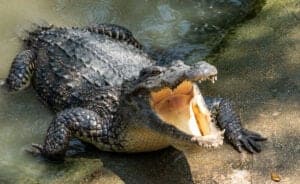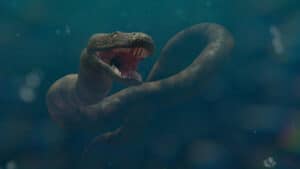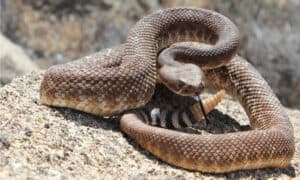Canada’s northerly location makes the snake population smaller than its southern neighbor, the United States. However, a smaller population doesn’t mean zero. Plus, it’s home to the largest snake dens in the world — the Narcisse Dens.
There are at least 25 snake species in Canada, plus two that scientists believe are extirpated from the country. While most of these are small, nonvenomous, and only in the far southern areas, there are a few exceptions.
Let’s take a look at the ten biggest snakes living in Canada today.
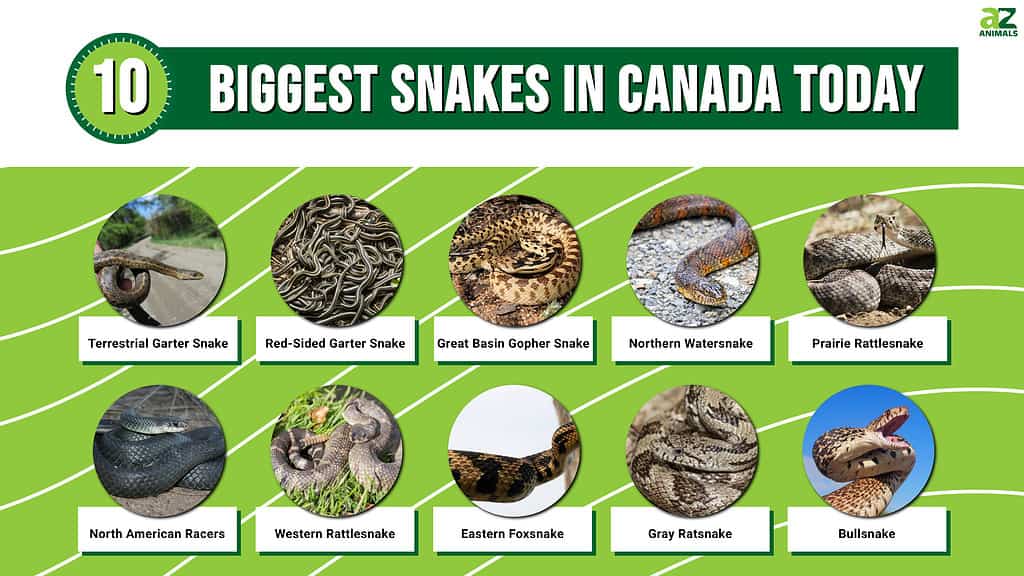
Read on for more detail about each of these fascinating snakes.
#10 Terrestrial Garter Snake (Thamnophis elegans)
The smallest snake on our list, the terrestrial garter snake, only grows to 41 inches. However, that’s bigger than most of the other native snakes, so it’s number 10 on our list.
Terrestrial garter snakes can be semiaquatic like other garter snakes, but they’re more flexible in their habitat and dietary needs. These snakes eat what they can catch, whether it’s earthworms, small fish, amphibians, or other insects. They’re one of the few garter snakes that have been documented as constricting their prey — even though they’re not very good at it.
This species has mild venom that’s only enough to help immobilize prey, but if they bite a person, it can cause local swelling and irritation. Otherwise, they’re harmless eaters of small things.
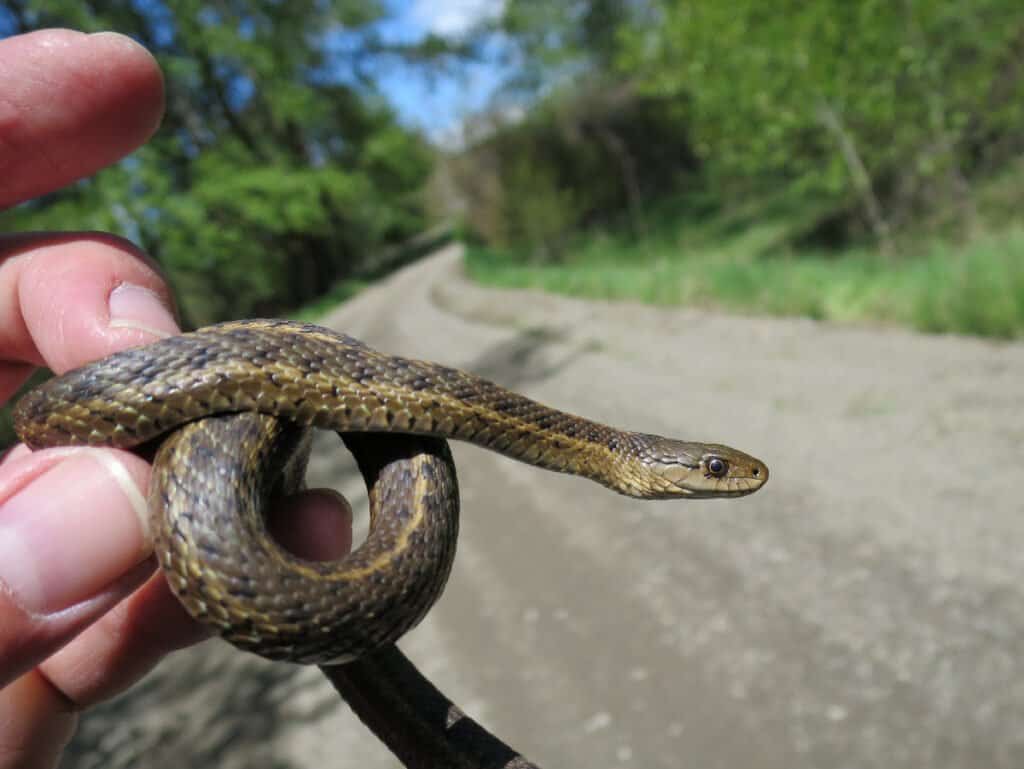
Terrestrial Garter Snakes have mild venom that sometimes causes local irritation when they bite people.
©Randy Bjorklund/Shutterstock.com
#9 Red-Sided Garter Snake (Thamnophis sirtalis parietalis)
While not notable for extraordinary size, red-sided garter snakes are notable for passing the cold Canadian winters in massive dens with thousands of other red-sided garter snakes. The garter snake dens in Narcisse, Canada are the sites of the largest snake mating ritual in the world.
Red-sided garter snakes, although not as big as many snakes in Canada, still come in at number nine — this harmless garter snake subspecies grows up to 49 inches long.
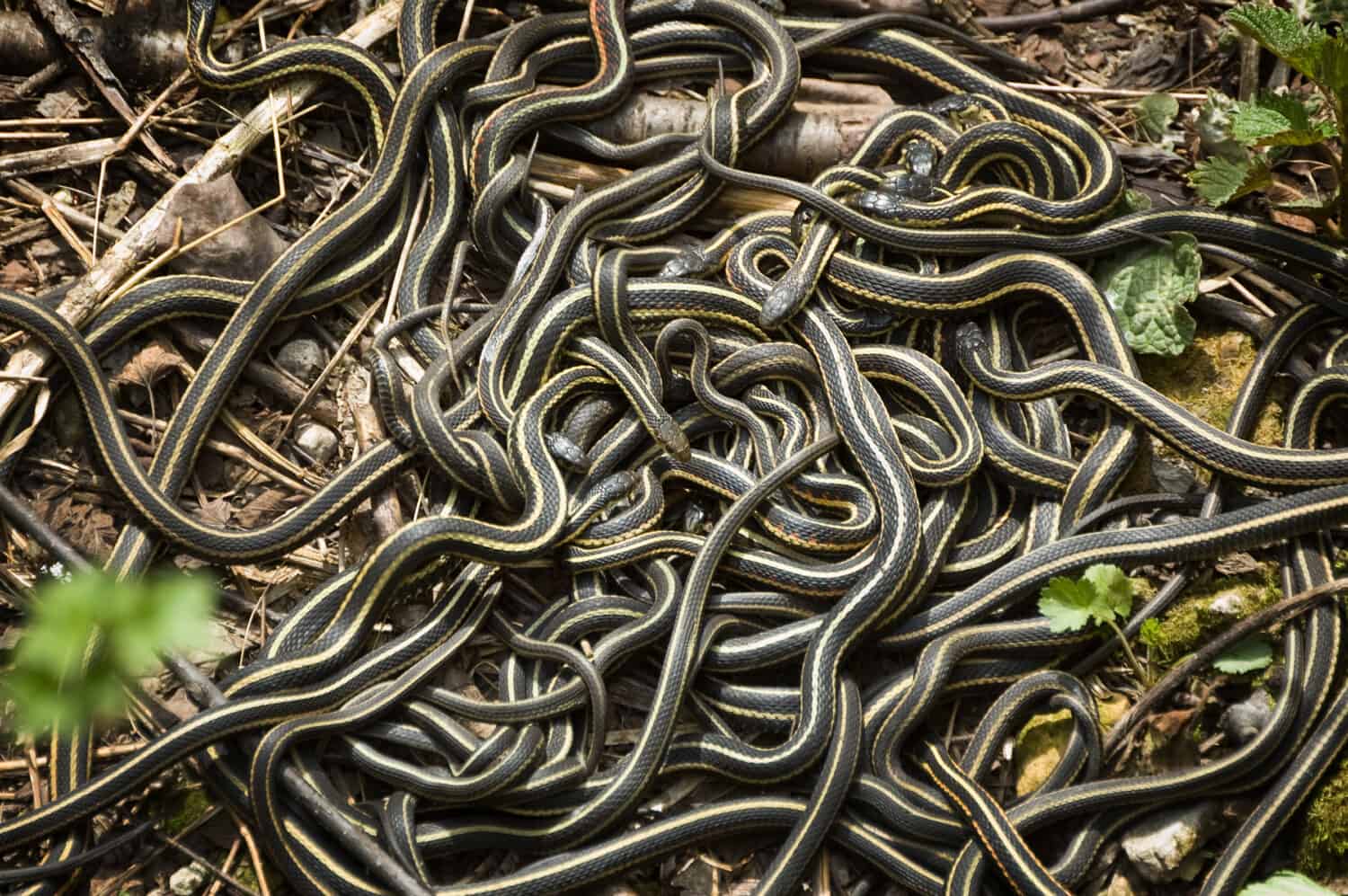
Red-sided garter snakes (Thamnophis sirtalis parietalis) in Narcisse, Manitoba, Canada, form huge mating balls every spring.
©Cindy Creighton/Shutterstock.com
#8 Great Basin Gopher Snake (Pituophis catenifer deserticola)
Although not as big as the other gopher snake subspecies on our list, the Great Basin gopher snake is still one of the biggest snakes in Canada.
This harmless snake grows up to 54 inches long and eats a ton of rodents each year. They’re considered farmers’ helpers and help prevent crop damage due to rats, mice, and other rodents. Great Basin gopher snakes are only present in southern British Columbia, where they mimic rattlesnakes when cornered. However, these docile snakes can’t hurt you, and when they strike, it’s usually with a closed mouth.
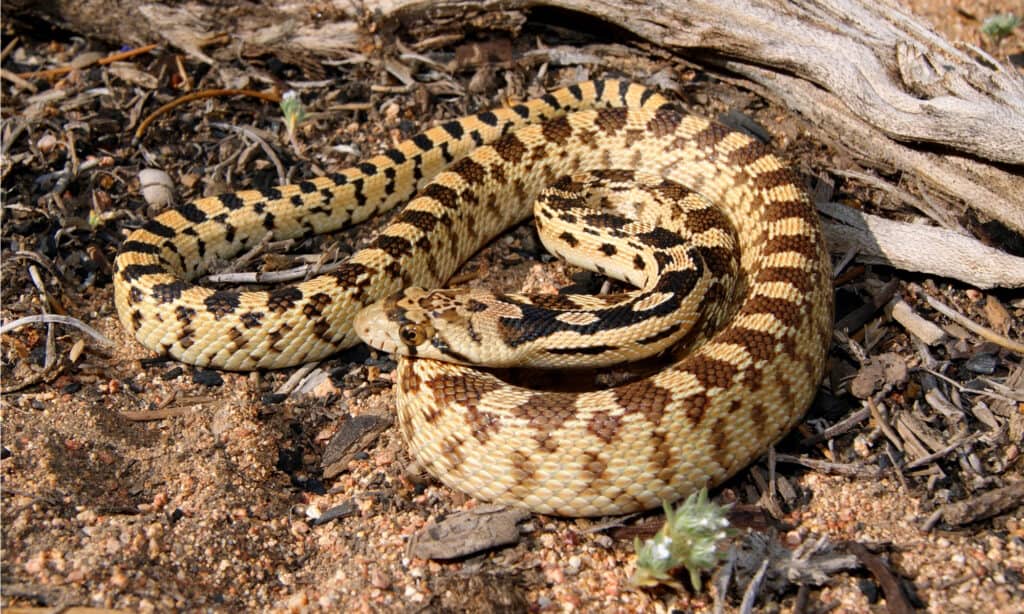
Great Basin Gopher Snake, Pituophis catenifer deserticola, is one of Canada’s biggest snakes.
©Matt Jeppson/Shutterstock.com
#7 Northern Watersnake (Nerodia sipedon sipedon)
Growing to about 59 inches, northern watersnakes are heavy-bodied with keeled scales. They’re semiaquatic and spend a lot of their time in and around the water — either basking or hunting for small fish, tadpoles, and amphibians.
They’re only present in far southern Ontario and Quebec, where they try to avoid people. These harmless snakes are nonvenomous but have razor-sharp teeth to catch their slippery prey. However, don’t try to pick them up! Although they’re nonvenomous, they will bite at the smallest provocation and excrete awful-smelling musk.
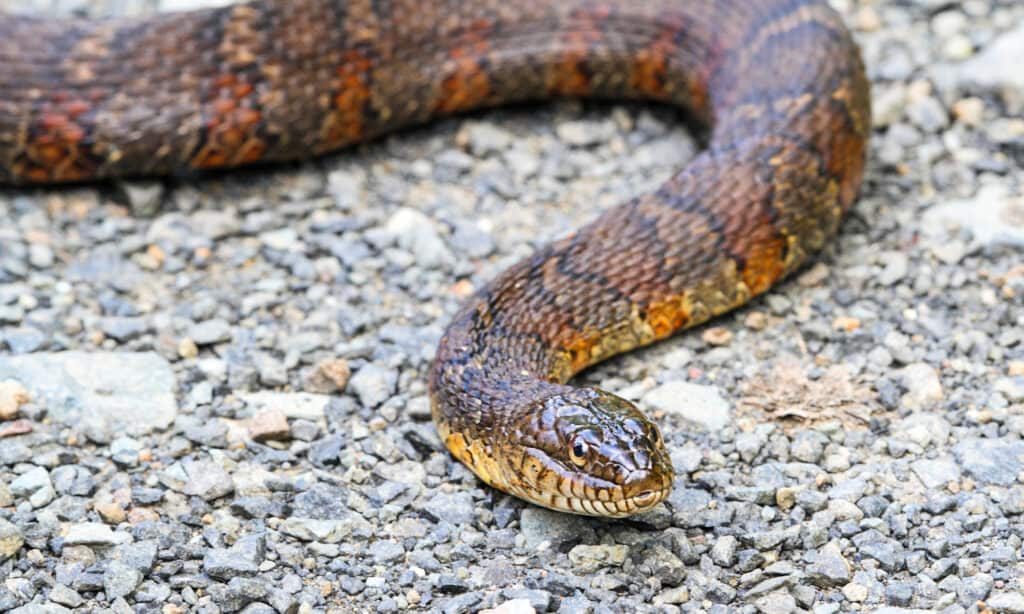
Northern watersnakes are one of the most widespread watersnakes in North America.
©Steve Byland/Shutterstock.com
#6 Prairie Rattlesnake (Crotalus viridis)
Rattlesnakes scare the daylights out of many people, but for others, they’re a sign of a healthy ecosystem. Prairie rattlesnakes are large-bodied venomous pit vipers that inhabit many areas across North America. In Canada, they only occur in southeastern Alberta and southwestern Saskatchewan.
Prairie rattlesnakes eat a variety of rodents, lizards, and other small prey. They’re not aggressive but coil up and rattle to fend off threats; their last resort is a bite from their long, hinged fangs. These rattlers can reach about 59 inches long but are often shorter.
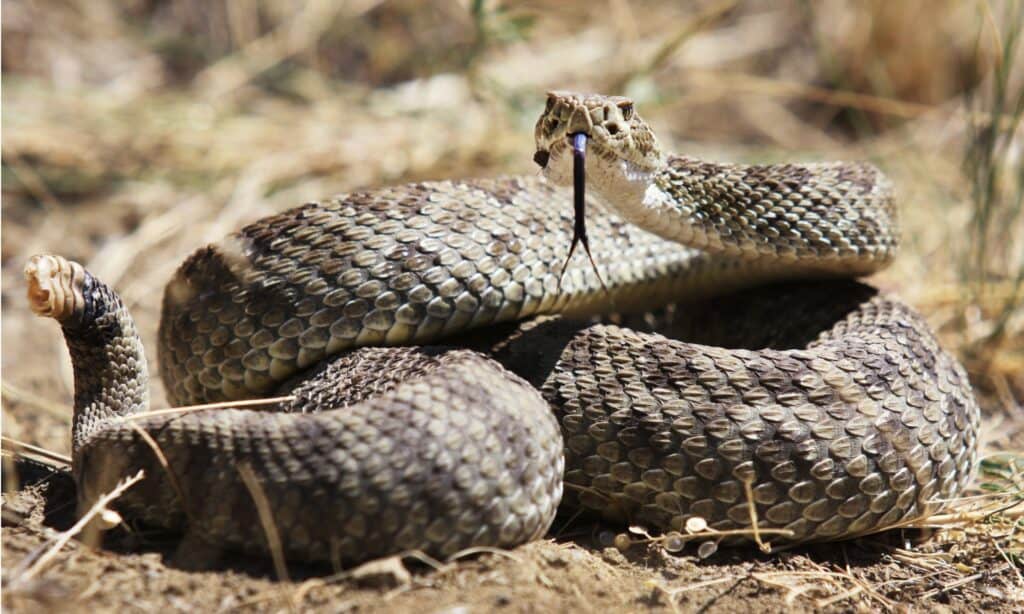
Prairie rattlesnakes (Crotalus viridis) are also sometimes called western rattlesnakes.
©iStock.com/HRossD
#5 North American Racers (Coluber constrictor ssp.)
North American racers’ subspecies are typically named for their color — blue racers, yellow-bellied racers, etc. In Canada, there are isolated pockets of three different racer subspecies along the Canada-U.S. border in British Columbia, Saskatchewan, and Ontario.
These snakes are long and thin, and all grow to about 60 inches long. Racers are fast-moving, nonvenomous colubrids that eat just about anything they can overpower, including small mammals, birds, lizards, and other snakes.
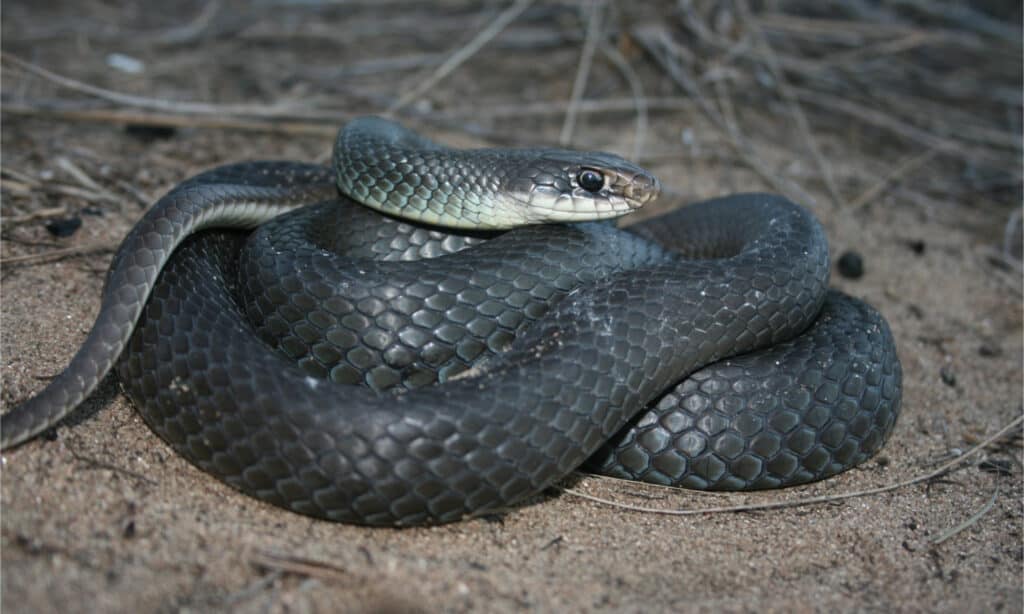
Some blue racers are a beautiful electric blue. Others are grayish or brownish.
©Psychotic Nature/Shutterstock.com
#4 Western Rattlesnake (Crotalus oreganus)
One of three rattlesnakes currently living in Canada, western rattlesnakes are the biggest. This heavy-bodied venomous snake’s range extends into extreme southern British Columbia, where they feed on small rats, mice, voles, and other small prey.
Western rattlesnakes, also called Northern Pacific rattlesnakes, are shy and avoid people whenever possible. These snakes can reach 64 inches long, and their camouflage is excellent for such a big snake. Like other rattlesnakes, this species has hinged fangs attached to big venom glands — a rattlesnake bite is a medical emergency. Fortunately, they’d rather escape than fight.
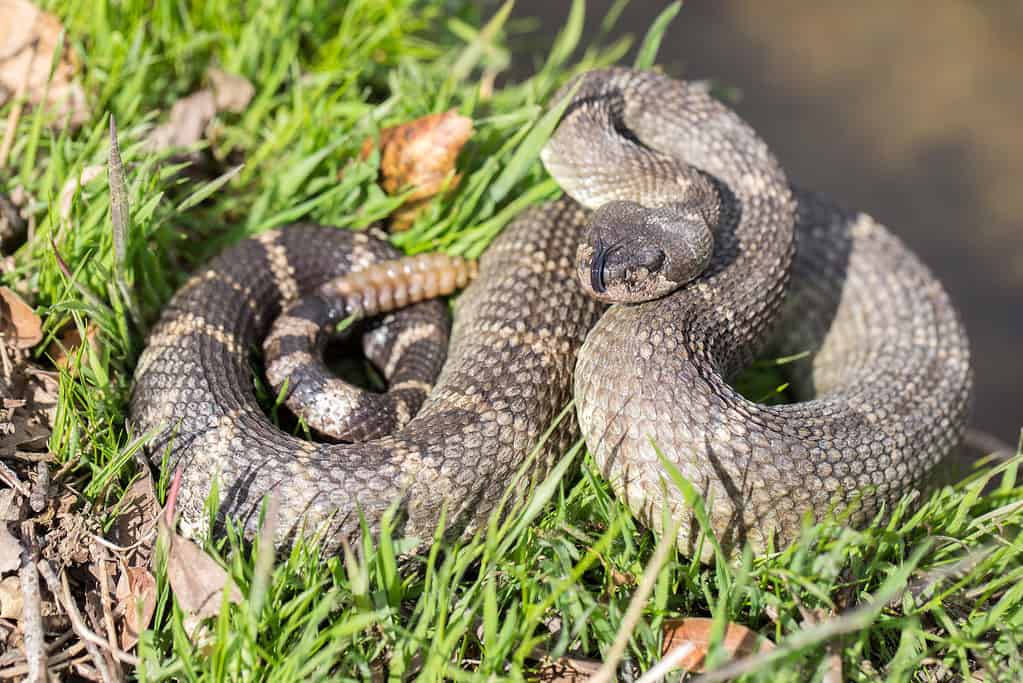
Northern Pacific rattlesnakes (Crotalus oreganus) only inhabit a small portion of southern British Columbia.
©iStock.com/yhelfman
#3 Eastern Foxsnake (Pantherophis vulpinus)
This ratsnake cousin sometimes reaches six feet long, but those at the northern end of their range in Canada stay smaller and only get up to about 66 inches long. However, that still places them in the top three biggest snakes in Canada!
They’re more terrestrial than their ratsnake cousins, but eastern foxsnakes are excellent climbers. These harmless snakes are rodent control for farmers and homeowners alike, eating a large number of them every year in southern Ontario, Canada.
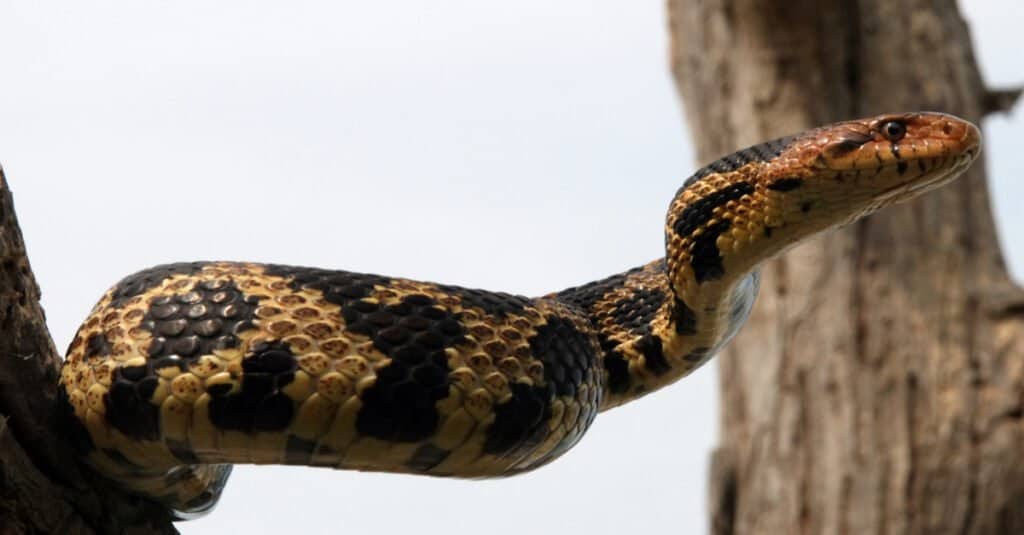
Fox snakes are agile climbers but tend to stay closer to the ground.
©Ryan M. Bolton/Shutterstock.com
#2 Gray Ratsnake (Pantherophis spiloides)
Of all the snakes in Canada, the gray ratsnake is one of the biggest. In truth, there are only a few inches between this snake’s maximum length and that of the bullsnake. However, a decision must be made, and those few inches plopped the gray ratsnake in the number two spot.
Gray ratsnakes eat rodents, birds, eggs, and other small animals, making them fantastic rodent control. Like their other ratsnake cousins, these snakes have a penchant for trouble. Their astounding climbing abilities take them into garages and attics, in addition to the trees and shrubs they typically frequent.
As the second-biggest snake in Canada, gray ratsnakes grow to a little over six feet long, or 74 inches. Although big, they’re harmless and helpful!
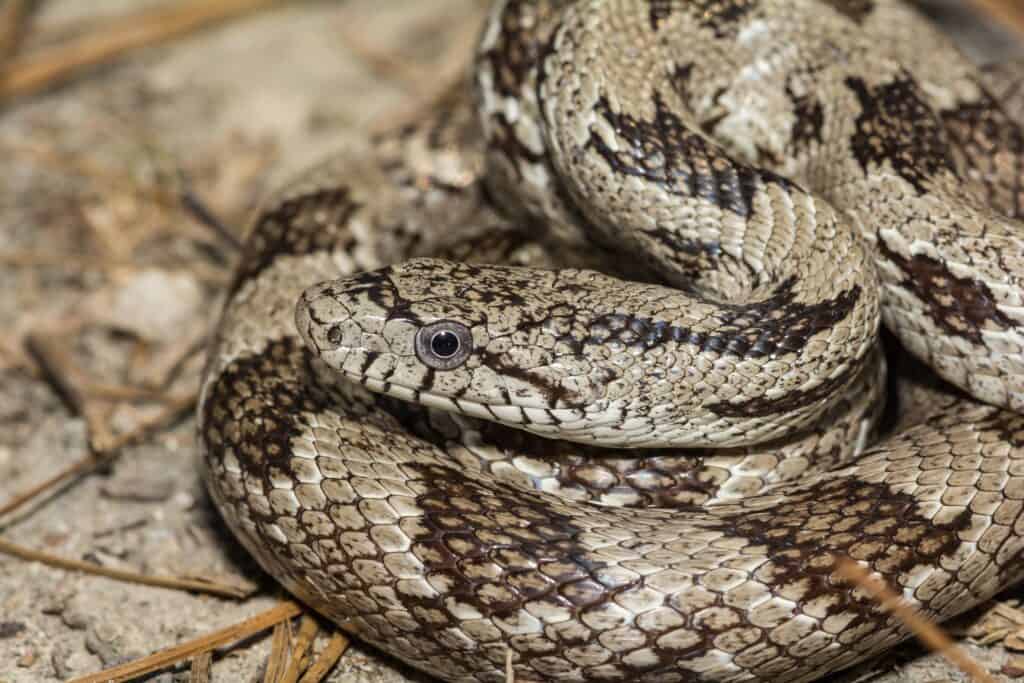
Gray ratsnakes retain most of their juvenile pattern as adults, unlike other ratsnakes.
©Jay Ondreicka/Shutterstock.com
#1 Bullsnake (Pituophis catenifer sayii)
Bullsnakes are the favorites of many snake lovers. They’re entirely harmless but put up one o nature’s best rattlesnake impressions — until you pick them up when they become docile and easily handled.
This snake is a gopher snake subspecies, one of several in North America. Bullsnakes in more southern habitats sometimes exceed eight feet long. However, in Canada, they are usually closer to six feet long and sometimes hit six and a half feet long, making bullsnakes Canada’s biggest snake.
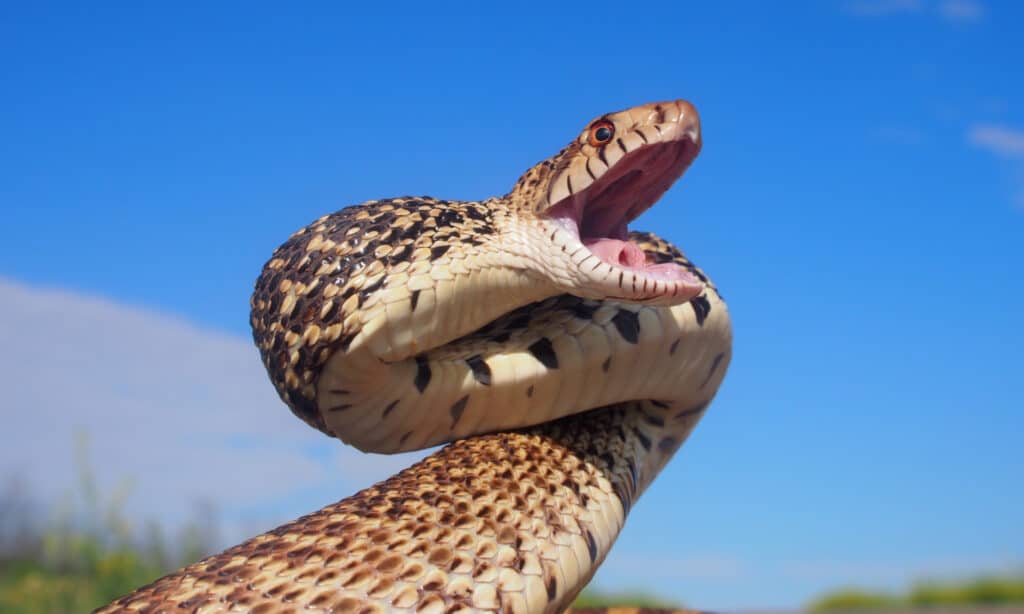
When threatened, the Bullsnake rears up in an S-shape, hisses, and vibrates its tail to mimic the venomous rattlesnake.
©Markparker1983/Shutterstock.com
Top Ten Biggest Snakes in Canada
| Rank | Snake | Length |
|---|---|---|
| #10 | Terrestrial Garter Snake | 41 inches |
| #9 | Red-Sided Garter Snake | 49 inches |
| #8 | Great Basin Gopher Snake | 54 inches |
| #7 | Northern Watersnake | 59 inches |
| #6 | Prairie Rattlesnake | 59 inches |
| #5 | North American Racers | 60 inches |
| #4 | Western Rattlesnake | 64 inches |
| #3 | Eastern Foxsnake | 66 inches |
| #2 | Gray Ratsnake | 74 inches |
| #1 | Bullsnake | 78 inches |
The photo featured at the top of this post is © Markparker1983/Shutterstock.com
Discover the "Monster" Snake 5X Bigger than an Anaconda
Every day A-Z Animals sends out some of the most incredible facts in the world from our free newsletter. Want to discover the 10 most beautiful snakes in the world, a "snake island" where you're never more than 3 feet from danger, or a "monster" snake 5X larger than an anaconda? Then sign up right now and you'll start receiving our daily newsletter absolutely free.
Thank you for reading! Have some feedback for us? Contact the AZ Animals editorial team.



